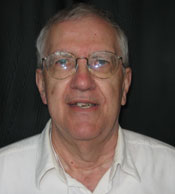Program Information
Comparison of Iodine-Labeled and Indium-Labeled Antibody Biodistributions
L Williams1*, (1) Retired from City of Hope Medical Center, Arcadia, CA
Presentations
SU-E-I-14 Sunday 3:00PM - 6:00PM Room: Exhibit HallPurpose:It is often assumed that animal biodistributions of novel proteins are not dependent upon the radiolabel used in their determination. In units of percent injected dose per gram of tissue (%ID/g), organ uptake results (u) may be obtained using either iodine or metal as radioactive labels. Iodination is preferred as it is a one-step process whereas metal labeling requires two chemical procedures and therefore more protein material. It is important to test whether the radioactive tag leads to variation in the uptake value. Methods: Uptakes of 3antibodies to Carcinoembryonic Antigen (CEA) were evaluated in a nude mouse model bearing 150 to 300 mg LS174T human colon cancer xenografts. Antibodies included diabody (56 kDa), minibody (80kDa) and intact M5A (150 kDa) anti-CEA cognates. Both radioiodine and indium-111 labels were used with uptakes evaluated at 7 time(t) points out to 96 h. Ratios (R) of u(iodine-label)/u(indium-label) were determined for liver, spleen, kidneys, lung and tumor. Results: Hepatic loss was rapid for diabody and minibody; by 24 h their R values were only 2%; i.e., uptake of iodine was 2% of that of indium for these 2 antibodies. By contrast, R for the intact cognate was 50% at that time point. Splenic results were similar. Tumor uptake ratios did not depend upon the antibody type and were 50% at 24 h. Conclusions: Relatively rapid loss of iodine relative to indium in liver and spleen was observed in lower mass antibodies. Tumor ratios were larger and independent of antibody type. Aside from tumor, the R ratio of uptakes depended on the antibody type. R values decreased monotonically with time in all tissues and for all cognates. Using this ratio, one can possibly correct iodine-based u (t) results so that they resemble radiometal-derived biodistributions.
Contact Email:


